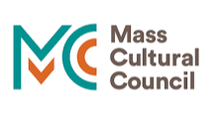Symphony Orchestra Audition Requirements
1) 3 Scales (2 major, 1 minor) with Arpeggios
2) 2 Prepared Solo Excerpts
A sight reading excerpt will be given at the time of your audition
|
String players
1) Readily play through at least 5th position, demonstrating a command of shifting 2) Be able to play with good intonation and expressiveness (dynamics, articulations, slurs, interpreting the melodies and musical ideas) 3) 3 Scales, at least in three octaves, major and minor, plus the accompanying arpeggios 4) Perform two contrasting pieces, (slow-fast or expressive-more technical/virtuosic) Specific Instrument Details: Viola - Ability to read treble clef Cello - Ability to read tenor clef All Concertmaster & Principal Seatings are determined in August when accepted students are sent a string hearing excerpt to prepare. Suggested Scales: Violin Scale Sheet Viola Scale Sheet 'Cello Scale Sheet String Bass Scale Sheet Please consult with your teacher/school music teacher on which arpeggios to play. Percussion: Students should prepare a snare excerpt and bring a snare with them to their audition. In General, percussionists should have experience with: - Timpani: Knowledge of tuning, ability to play on at least three drums - Ability to play the standard orchestral percussion: Snare, Bass, Cymbals (Crash & Suspended), Triangle and a mallet instrument (Vibraphone, Xylophone, Glock). WYSO Percussion Policy: WYSO Percussion is divided into Timpani and the Percussion Section. The Timpanist is considered the Principal Percussionist, and is the de facto timpanist when the work calls for it. The percussion section has a Section Leader who coordinates part coverage and player distribution. WYO's Timpanist is expected to play percussion when a piece does not call for Timpani, and works with the Percussion Section Leader to coordinate parts. |
Winds & Brass
1) Three Scales (2 major, 1 minor) 2) Two contrasting solo works of your choice All Principal Seatings are determined in August when accepted students are sent a hearing excerpt to prepare. Specific Instrument Details: Flute - All flutes should be prepared to play/learn piccolo Clarinet - Knowledge of both Bb & A transpositions is preferable Bassoon - Ability to read tenor clef preferable Trombone - Ability to read c-clef required Piano/Keyboard 1) Two contrasting solo works of your choice Harp 1) Two contrasting solo works of your choice (one must demonstrate knowledge of glissandos) Suggested Scales: Oboe Scale Sheet Bassoon Scale Sheet Flute Scale Sheet Clarinet Scale Sheet Bass Clar. Scale Sheet Trumpet Scale Sheet Trombone Scale Sheet Bass Tbne Scale Sheet Fr. Horn Scale Sheet Tuba Scale Sheet |
School Participation Policy:
WYO ensemble and performance opportunities are intended to compliment school music programs. It is the policy of the Worcester Youth Orchestras that each student musician participates in his/her/their school music program, if offered at the musician’s school as part of the school day curriculum and/or as an after/before school activity or club.
WYO ensemble and performance opportunities are intended to compliment school music programs. It is the policy of the Worcester Youth Orchestras that each student musician participates in his/her/their school music program, if offered at the musician’s school as part of the school day curriculum and/or as an after/before school activity or club.
NOTICE OF NONDISCRIMINATORY POLICY AS TO STUDENTS
The Worcester Youth Orchestras School admits students of any race, color, sexual orientation, gender preference, religion, national and ethnic origin to all the rights, privileges, programs, and activities generally accorded or made available to students at the school. It does not discriminated on the basis of race, color, sexual orientation, gender preference, religion, national and ethnic origin in administration of its educational policies, admissions policies, scholarship and loan programs, and other school administered programs.
The Worcester Youth Orchestras School admits students of any race, color, sexual orientation, gender preference, religion, national and ethnic origin to all the rights, privileges, programs, and activities generally accorded or made available to students at the school. It does not discriminated on the basis of race, color, sexual orientation, gender preference, religion, national and ethnic origin in administration of its educational policies, admissions policies, scholarship and loan programs, and other school administered programs.



